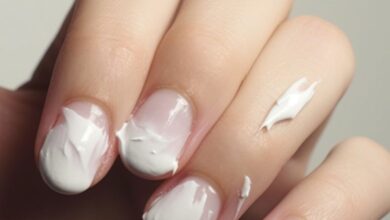
From age 65, how often should you shower
As we age, everyday routines that once seemed harmless sometimes need rethinking. One such ritual is showering. For many people, stepping under hot water daily feels like the ultimate refresh, a non-negotiable start or end to the day. But after the age of 65, dermatologists and geriatric health experts caution that frequent showers may do more harm than good. The truth is, older skin changes in ways that make over-washing risky, and learning to adjust can go a long way toward preserving both comfort and health.
Why skin changes after 65
Skin is not static. As the years pass, its structure and chemistry evolve. Collagen and elastin, the proteins that give skin its firmness and elasticity, gradually diminish. Sebum production, the natural oil that helps lock in moisture and create a protective barrier, also declines. Combine this with a thinning epidermis, and older skin becomes drier, more fragile, and slower to heal. While younger skin can bounce back from long hot showers or aggressive scrubbing, older skin simply doesn’t have the same resilience.
By age 65, these shifts mean that daily showers can strip away what little natural oil remains. This can leave the skin itchy, irritated, and prone to cracks that open the door to infection. For seniors already managing chronic conditions like diabetes or circulatory problems, even small skin injuries can complicate into larger health issues.
How often should seniors shower?
So, what’s the right balance? Experts suggest that most older adults only need to shower two to three times per week. That frequency is generally enough to stay clean and healthy, especially if combined with simple daily hygiene practices such as washing the face, hands, underarms, and groin area with mild soap. Spot-cleaning helps maintain freshness without exposing the entire body to harsh soap and water on a daily basis.
Bathing habits should also adapt to lifestyle. Seniors who are active, spend time outdoors, or sweat heavily may need more frequent showers, while those with limited mobility or less physical activity might comfortably extend the time between full washes. The key is listening to the body and noticing when the skin feels dry or irritated—clear signs it may be time to cut back.
The hidden dangers of over-washing
It’s not just about dryness. Over-washing can set off a cascade of secondary problems. When skin is constantly stripped of oils, the body sometimes responds with overproduction, leading to greasy patches. Alternatively, fragile skin may crack, triggering dermatitis, eczema flare-ups, or fungal infections. Excessive use of hot water, scented soaps, and exfoliating products can accelerate these issues.
Older adults may also be more sensitive to temperature changes. Hot showers can lower blood pressure temporarily, leaving some seniors dizzy or at risk of falls. Prolonged exposure to heat can also exacerbate conditions like rosacea or aggravate varicose veins. A shower intended to invigorate can inadvertently create hazards if not adjusted to the body’s changing needs.
Best practices for healthy aging skin
Cutting back on shower frequency doesn’t mean sacrificing cleanliness or comfort. The following simple adjustments can help seniors maintain hygiene while protecting delicate skin:
Use lukewarm water. Hot water strips oils faster; lukewarm is gentler and still effective.
Choose mild, fragrance-free cleansers. Harsh soaps dry out skin. Look for gentle, pH-balanced products.
Moisturize immediately after bathing. Applying lotion or cream while skin is still damp locks in hydration.
Limit time under the water. Short showers of 5–10 minutes are enough to cleanse without overexposure.
Focus on key areas. The underarms, groin, feet, and face need more frequent cleaning than arms or legs.
Rethinking cleanliness as self-care
For many seniors, the idea of showering less often may feel counterintuitive, even unhygienic. Decades of advertising and cultural norms have equated daily bathing with good health and respectability. But aging well often requires challenging long-held assumptions. Cleanliness isn’t about a rigid schedule; it’s about maintaining balance.
Instead of viewing reduced showering as neglect, it can be reframed as self-care—protecting the skin, reducing fall risk, and respecting the body’s natural changes. With the right adjustments, hygiene routines can remain dignified, refreshing, and safe well into the golden years.
The takeaway
After 65, the skin’s ability to self-protect diminishes, and over-washing can accelerate damage. By showering just a few times a week, using gentle products, and moisturizing regularly, seniors can maintain hygiene without sacrificing skin health. Less can truly be more when it comes to bathing in later life.




